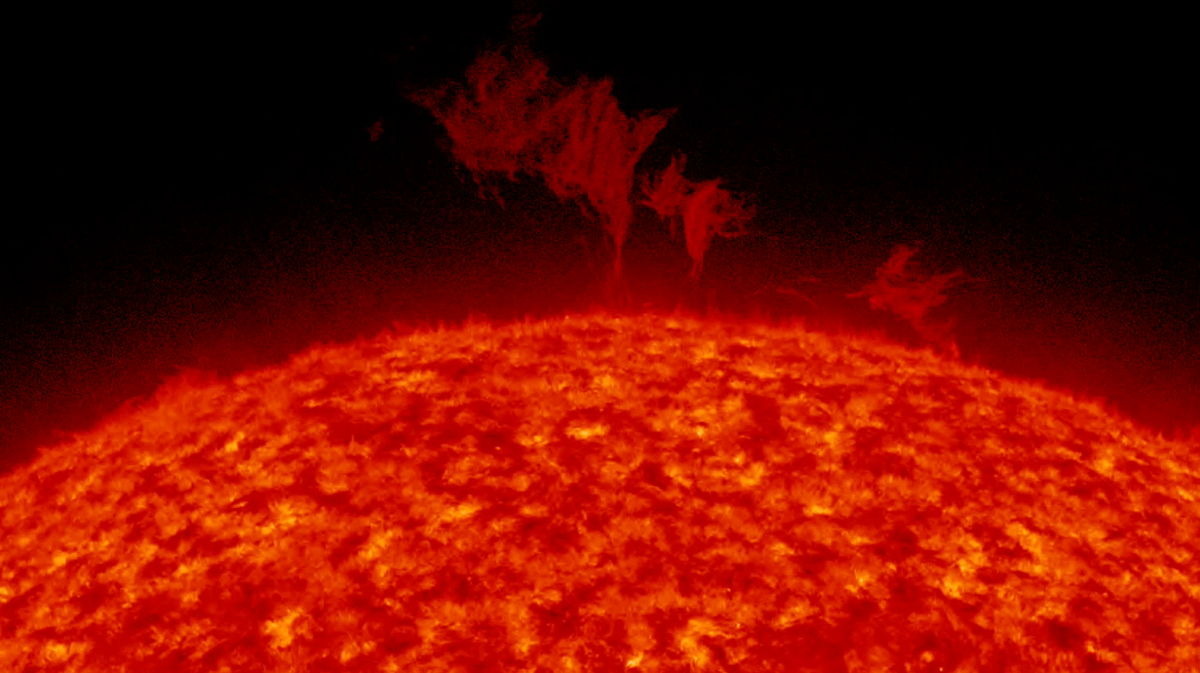Exploring How AI Aids Scientists in Unraveling the Sun’s Fundamental Mysteries

The Sun’s Activity and Advancements in Observational Technology
Understanding Solar Cycles
Our sun goes through an 11-year cycle of energetic activity, which includes phenomena like solar flares and sunspots. Scientists continuously strive to understand these cycles better, and recent advancements in technology offer new tools for making sense of the sun’s complex behavior.
The Role of Artificial Intelligence
A pivotal study suggests that artificial intelligence (AI) can play a critical role in analyzing solar data. Given the rapid advancements in observational technologies, AI can help bridge the gap between older and newer datasets, allowing researchers to uncover valuable patterns in our star’s long-term evolution.
Challenges with Data Compatibility
As new generations of solar telescopes emerge, they provide incredible insights, capturing intricate details about the sun’s activity and mapping its magnetic fields with exceptional precision. However, these new instruments often deliver data that is not compatible with older datasets due to differences in resolution, calibration, and overall quality. This inconsistency poses a significant challenge for scientists looking to analyze how solar activity has changed over decades.
Bridging the Gap with AI
The new AI-based approach outlined in the study aims to resolve these issues by recognizing and translating data patterns from various solar instruments into a standardized format. This method enables scientists to build a richer archive of solar observations that can be used for comprehensive analyses over extended periods.
How the AI Method Works
According to Robert Jarolim, the lead researcher from the University of Graz in Austria, while AI cannot replace observational data, it optimally leverages existing datasets. Their innovative method involves two key steps using neural networks, a type of machine learning algorithm inspired by the human brain:
Simulating Degradation: The first neural network takes high-quality images and artificially degrades them to mimic the output from a lower-quality instrument. This allows the AI to learn the specific differences caused by various instruments in the data.
- Restoring Quality: The second neural network processes these degraded images to “undo” the effects of degradation, effectively restoring them to resemble the original high-quality images. This step is crucial for addressing the discrepancies between different observation technologies.
Effects on Solar Research
The implications of this AI framework are profound. By enhancing older data with the accuracy and clarity of newer instruments, scientists can analyze historical observations as if they were captured with the latest technology. This method allows for:
- Improved resolution and details in solar images
- Reduction of atmospheric noise in ground-based observations
- Better estimates of magnetic fields on the sun’s far side
Practical Applications
The researchers successfully applied this innovative method to data from various space telescopes collected over two solar cycles, covering approximately 20 years. One notable application involved tracking a specific sunspot, NOAA 11106, for a week in September 2010. The AI technique generated sharper and more detailed "magnetic pictures," enhancing the understanding of the sunspot’s magnetic structure compared to the original data from the Solar and Heliospheric Observatory (SOHO), a collaboration between NASA and the European Space Agency.
Future Implications
This research project not only demonstrates the power of modern computing to revitalize historical solar data but also aims to create a universal language for studying solar evolution over time. As Tatiana Podladchikova from the Skolkovo Institute of Science and Technology pointed out, this technique transcends mere image enhancement; it allows every observation—past and future—to communicate in a consistent scientific framework.
The advancements in AI are set to pave the way for a future where the vast history of solar observations becomes more accessible and interpretable, enabling deeper insights into our sun’s behavior and its impacts on the solar system.






